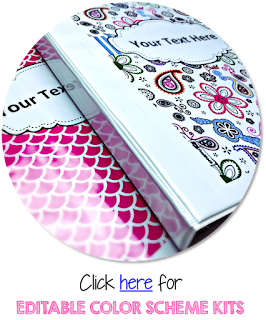Hey guys! I am a big fan of small group rotations where kids can play games and get all of that mundane skill repetition and practice in without even knowing it. However, my setup has never been completely fluid, but I think I have finally found my way this year for making my small groups fast and efficient. Um, I think. And I hope.
With 23 students in a small portable, I decided I would have 12 stations with 3 students in each group (which obviously leaves me some extra stations). I really like partner groups best, but students will always be absent, or in speech, or at the nurse, so with three, there should almost always be two to play the games.
To create my games, I first needed to assess where students were at. So, I gave them a placement test from our Envision curriculum and stole Tonya's Teaching Treats Idea for an awesome and quick way to assess and collect data.
How it Works:
After self-marking their math placement tests, I gave each student a strip. They wrote their name at the top and then highlighted the ones they got wrong.I then transferred the strips to a folder and added the number wrong above each student. This was a HUGE help in placing students in small groups. You can download my Word doc I created here and the PDF here for the data strips.
Based on the data, I tried to group one low, one medium, and one high student together (it's hard to see, but I highlighted their names up top either pink, yellow, or green based on how many they missed).
I definitely believe in mixed ability groups. Now when I need to pull students to work with, I can pull several low students at a time, and there will still be two remaining students left in groups to continue the activities.
I created these wheels on white boards for easy reference of which group students are in and which station they need to go to. I don't have time to really share how I did it, but I used a plastic file divider for the wheel, white boards to clue it on, and circle number labels that you can download here.
I drew a star by my team leaders' names. These guys will keep everyone on track, make sure the group is speaking Spanish, and make critical decisions when conflicts come up (because we know they will!).
I wrote with fine tip Expo markers so I change groups easily whenever I need to.
The materials for each game I placed in canvas boxes in my cubby shelves that are labeled with my circle labels. There's not a 7 or 8 because this is for computers and laptops. When it's time for groups, leaders look at the wheel for their station number, grab the station box from the shelf, go to where the station is located by looking for the station marker, and then get crack-a-lackin'!
We usually only have time to do 2 or 3 stations a day, so the stations I put together will last me several weeks. I just move the wheel to where we will begin the next day after station time is over. Creating a wheel for each of my two classes means I can go at a different pace with each class and we will still know where we are at.
Well, thanks for stopping by! BTW, are you looking for classroom theme or color scheme ideas? Be sure to check out the following classroom material bundles I have created:










So helpful! Thanks for sharing - I have one question though.
ReplyDeleteWhat are the different colored highlighters stand for in your data folder?
Thanks!
Rae
Mindful Rambles
Just the students' different-colored highlighters. :P One teacher asked if it represented different CC standards. That would have been cool!
DeleteTHis is great!! I wonder what types of exciting math activities are in the bins ... :)
ReplyDeleteHey, Crystal! I wrote about exactly that in my new post! http://flapjackeducationalresources.blogspot.com/2013/09/multiplication-fact-center-station-ideas.html. Thanks!
DeleteMathematics is one of the tough subjects at school and with this technique that you had shared, theis makes the math learning much fin and easy.
ReplyDeleteopen source student information system